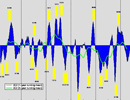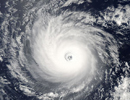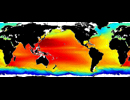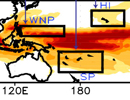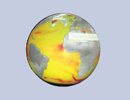An optimized air-sea CO2 flux data set
An offline tracer transport model was used, driven by reanalysis ocean currents and coupled to a simple biogeochemical model, to synthesize the surface ocean pCO2 and air–sea CO2 flux of the global ocean from 1996 to 2004, using a variational assimilation method. This oceanic CO2 flux analysis system was developed at the National Institute for Environmental Studies (NIES), Japan, as part of a project that provides prior fluxes for atmospheric inversions using CO2 measurements made from an on-board instrument attached to the Greenhouse gas Observing SATellite (GOSAT). Nearly 250,000 pCO2 observations from the database of Takahashi et al. (2007) have been assimilated into the model with a strong constraint provide by ship-track observations while maintaining a weak constraint of 20% on global averages of monthly mean pCO2 in regions where observations are limited.
The data provided in this collection spans from 1980 to 2009.
Reference:
Takahashi, T., Sutherland, S. C. and Kozyr, A. 2007. Global ocean surface water partial pressure of CO2 database: measurements per- formed during 1968-2006 (Version 1.0). ornl/cdiac-152, ndp-08. Car- bon Dioxide Information Analysis Center 20.
VALSALA, V. and MAKSYUTOV, S. (2010), Simulation and assimilation of global ocean pCO2 and air–sea CO2 fluxes using ship observations of surface ocean pCO2 in a simplified biogeochemical offline model. Tellus B, 62: 821–840.
| Variables | CO2 flux (mole/m2/sec) |
| Zonal | Global by 1 deg |
| Meridional | Global by 1 deg |
| Vertical | N/A |
| Temporal | Jan 1980 to Dec 2009 by 1 month(s) |
| Static? | yes |
| Volume | 89MB total |
| Server | public:      |
| Source | http://cdiac.ornl.gov/oceans/CO2_Flux_1996_2004.html |
| Acquired | Aug 10, 2011 |
| APDRC contact | |
| Supplements | http://cdiac.ornl.gov/ftp/oceans/co2flux_1996_2004/Tellus_B_821_840.pdf |



